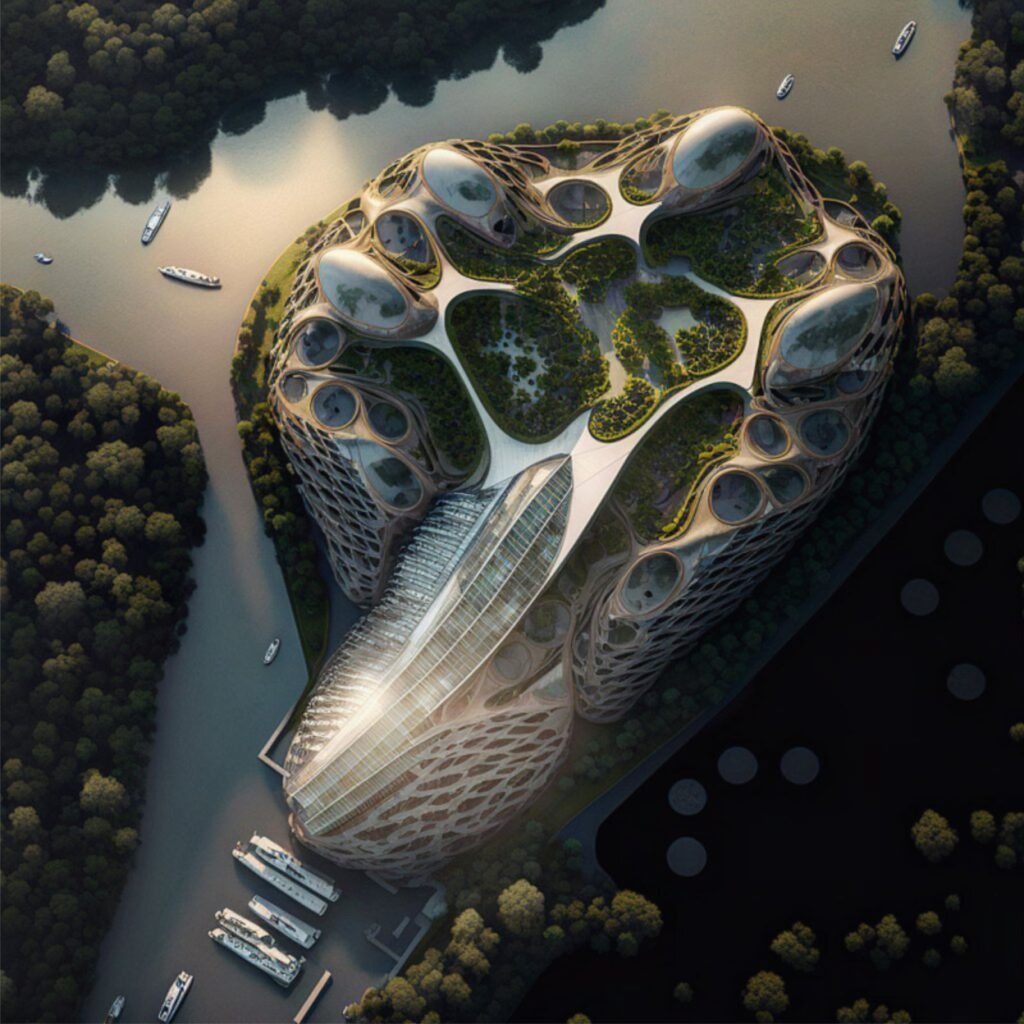Nutopia by MONOMO

Climate change is a defining issue of our time, and as architects and builders, we have a unique opportunity to use our skills to mitigate its effects.
By harnessing the power of new technologies and alternative construction materials, we can create buildings that are not only sustainable, but also beautiful and inspiring.
One of the most promising areas of innovation in architecture is the use of biomorphic design principles. By mimicking the forms and functions of natural organisms, we can create buildings that are more energy-efficient, adaptable, and resilient.
This can be achieved by using computational tools such as LEAP (Life Cycle Analysis Program) and BEM (Building Energy Modeling) programs, which allow us to analyze and optimize building designs based on factors such as solar exposure, wind patterns, and hydrology.
One of the most promising materials for biomorphic architecture is wood. Wood is a renewable resource that is abundant, lightweight, and strong. It can also be used to create complex, curved forms that are not possible with traditional building materials.
By using engineered wood products such as cross-laminated timber and glulam, we can create tall, multi-story buildings that are both sustainable and beautiful. Another important aspect of sustainable architecture is the use of software to evaluate the environmental performance of buildings.
BEM software is commonly used in architecture to calculate the energy efficiency of buildings. However, there is also software available to calculate the carbon emissions of buildings, such as the Carbon Emissions Reduction Target (CERT) and the Energy Performance Certificates (EPC).
By using these tools, architects can design buildings that are more energy-efficient and have a lower carbon footprint. The role of AI in architecture is also becoming increasingly important. AI can be used to analyze large amounts of data and optimize building designs based on a variety of factors.
For example, AI can be used to optimize building layouts, select materials, and control systems to minimize energy consumption. Additionally, AI can be used to monitor and control building systems in real-time, ensuring that they are operating at peak efficiency.
As we begin to rethink the way we build our cities, it is important to remember that buildings are an extension of the earth. They are not separate from the natural world, but rather a part of it.
By using biomorphic design principles, alternative construction materials, and advanced computational tools, we can create buildings that are not only sustainable, but also beautiful and inspiring.
Together, we can create a future in which our buildings are an integral part of the natural world, rather than a threat to it. In conclusion, Climate change is a global concern that requires immediate action.
By using new technologies and materials, such as biomorphic architecture, AI, alternative construction materials and software as LEAP, BEM and carbon emissions calculation software, we can create sustainable buildings that not only reduce their impact on the environment but also inspire and promote a new way of living in harmony with planet earth.
We have the power to create a more sustainable future, and it is our responsibility to use it wisely. We have no choice, earth will remain here for another 4 billion years probably, if we continue to behave as we are behaving now we might probably not. Source and images Courtesy of MONOMO.
Image © MONOMOImage © MONOMOImage © MONOMO





